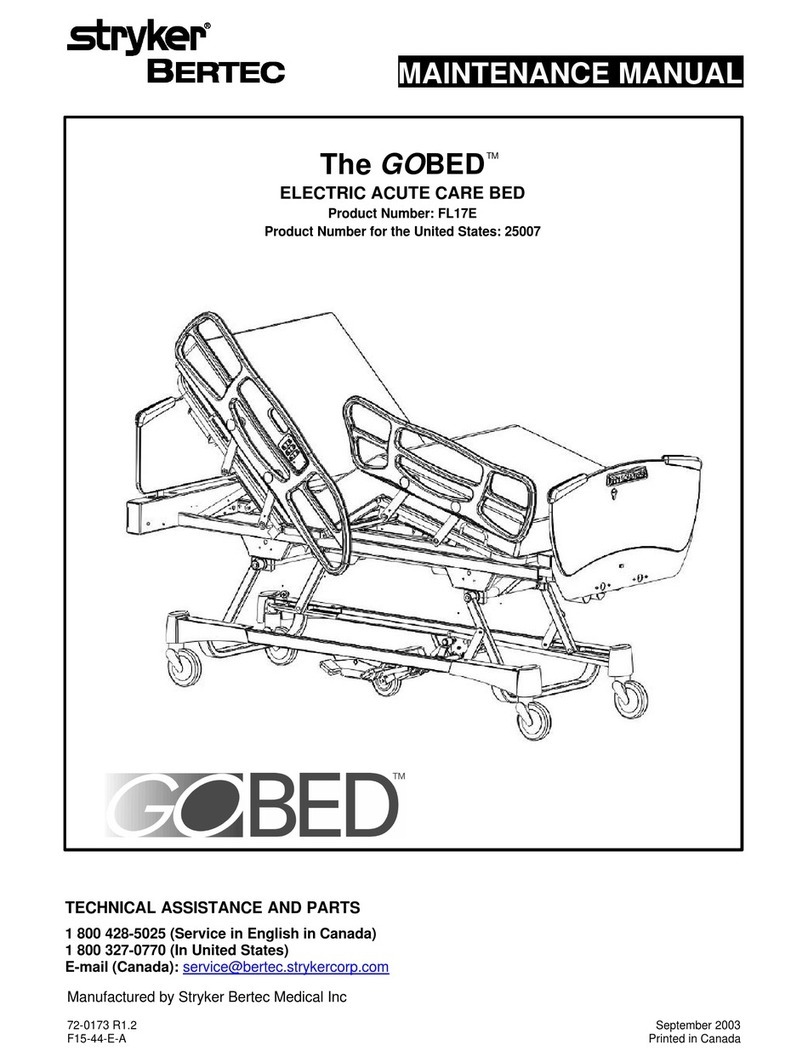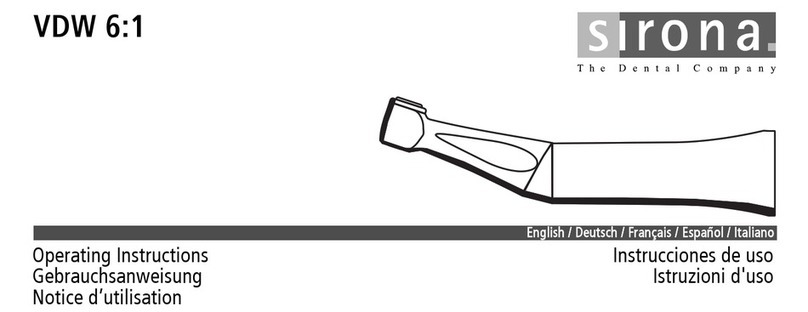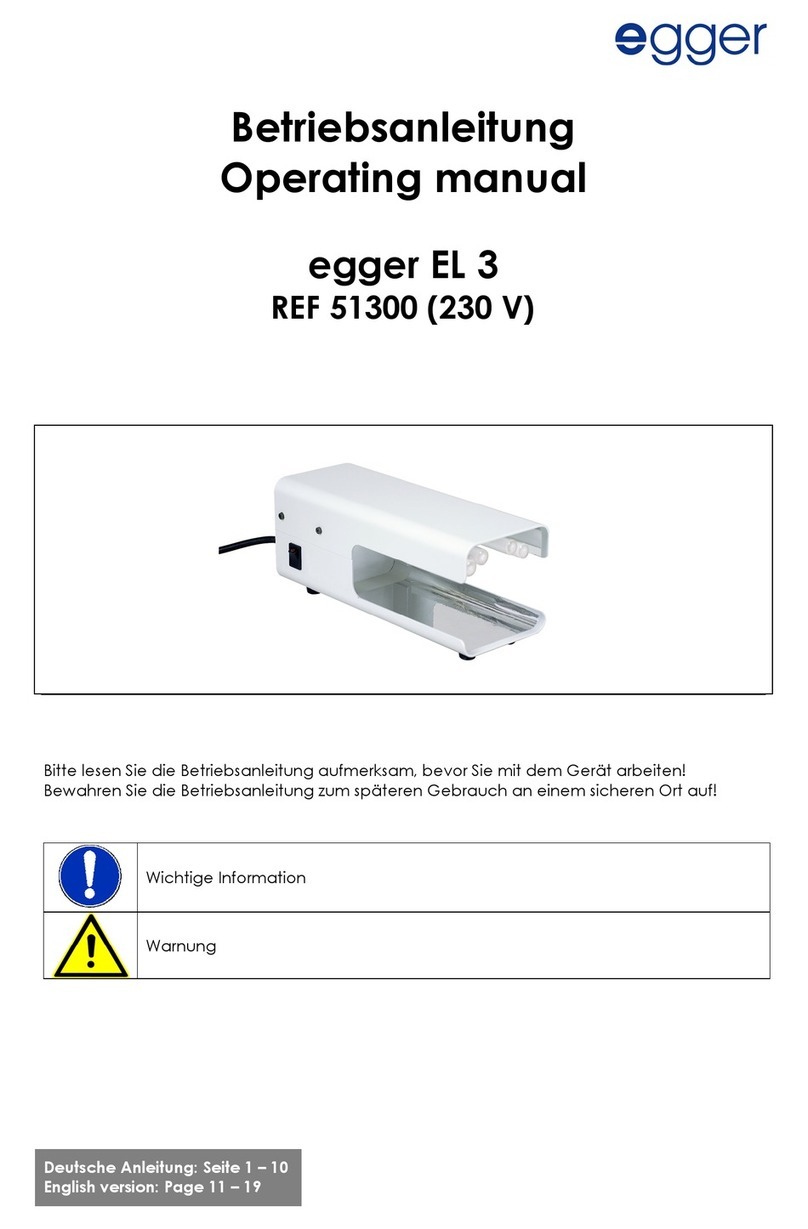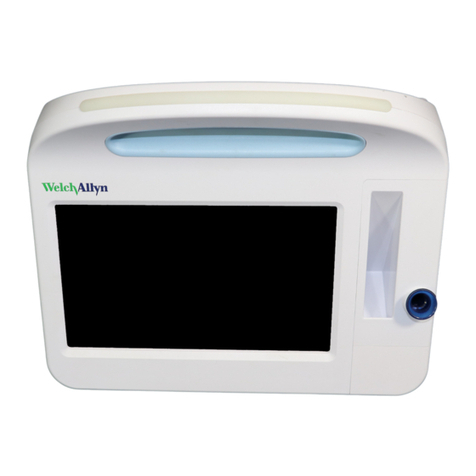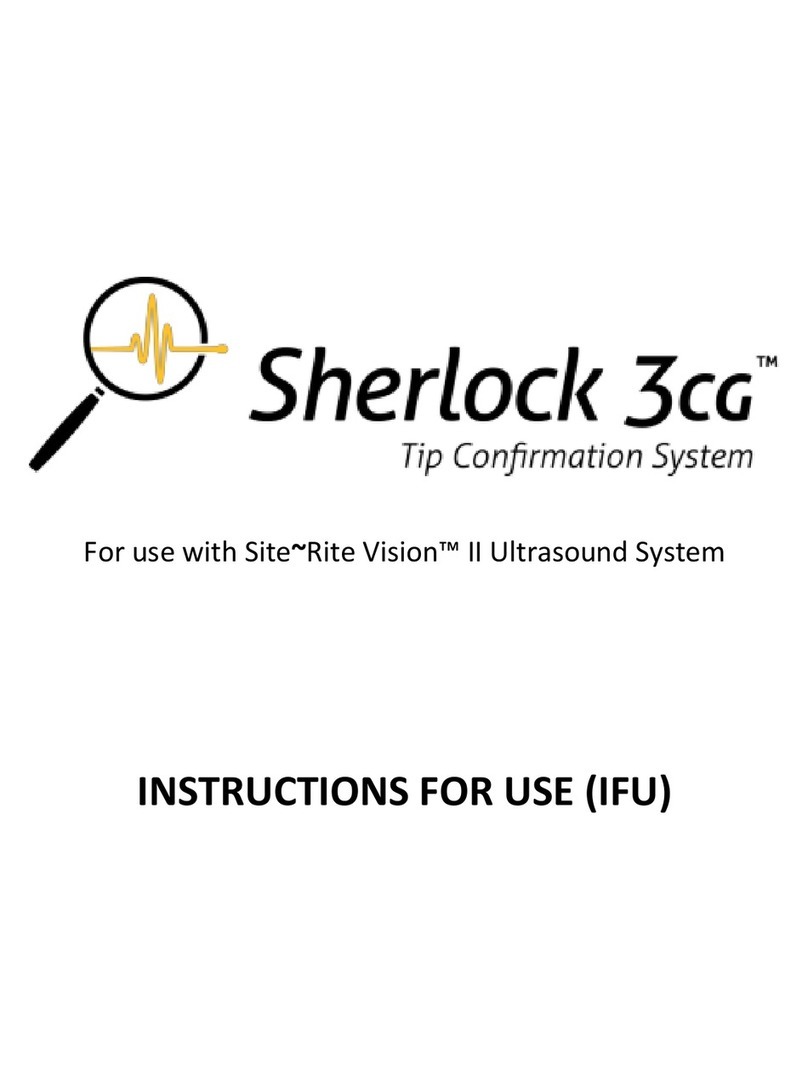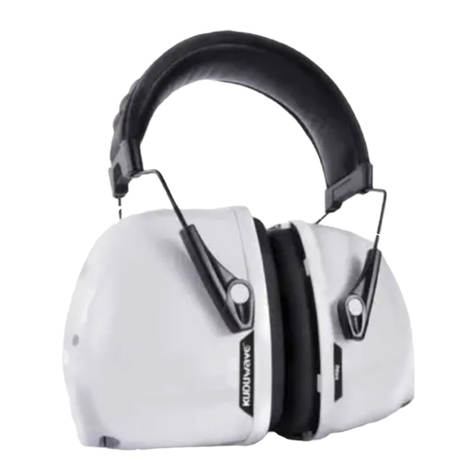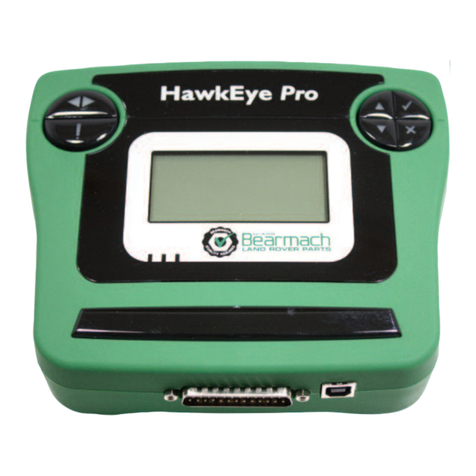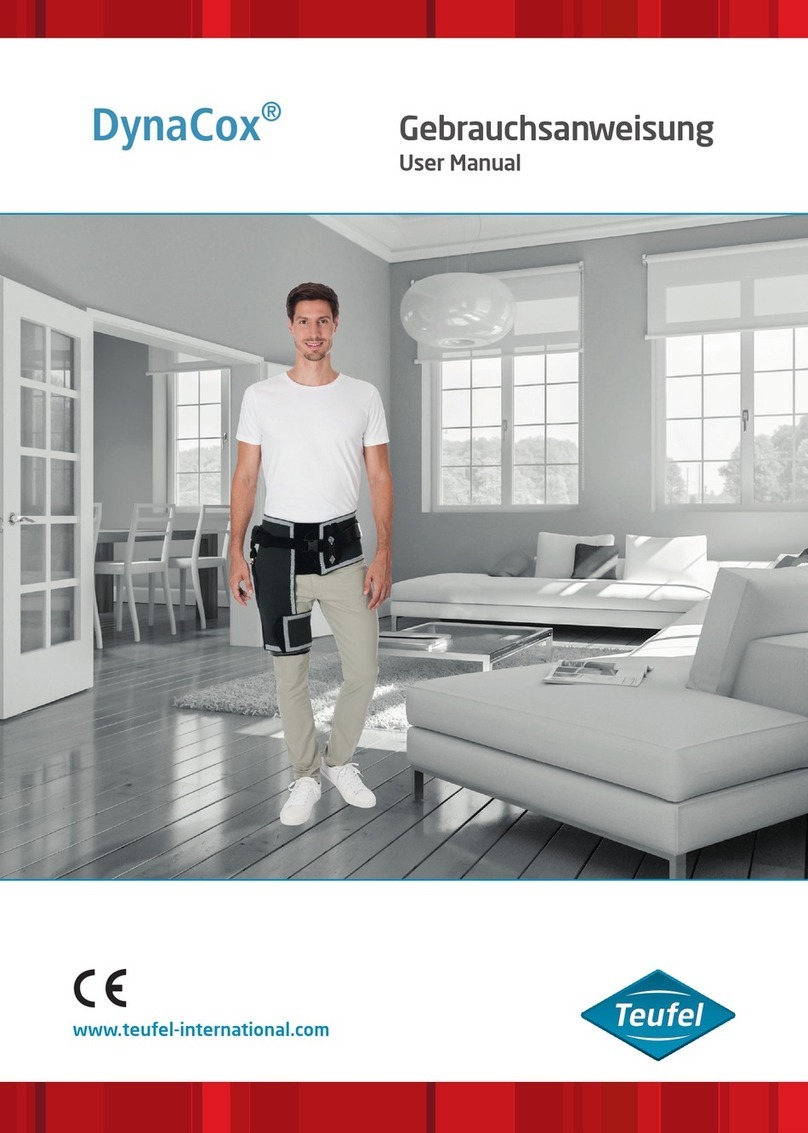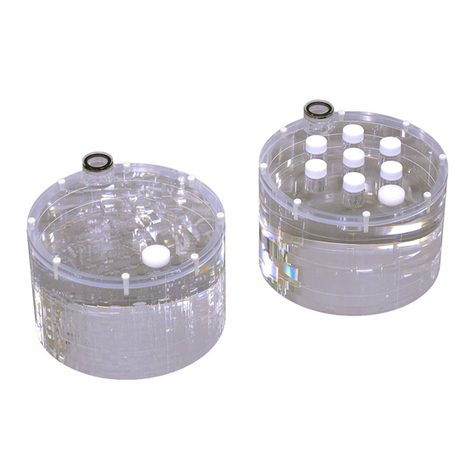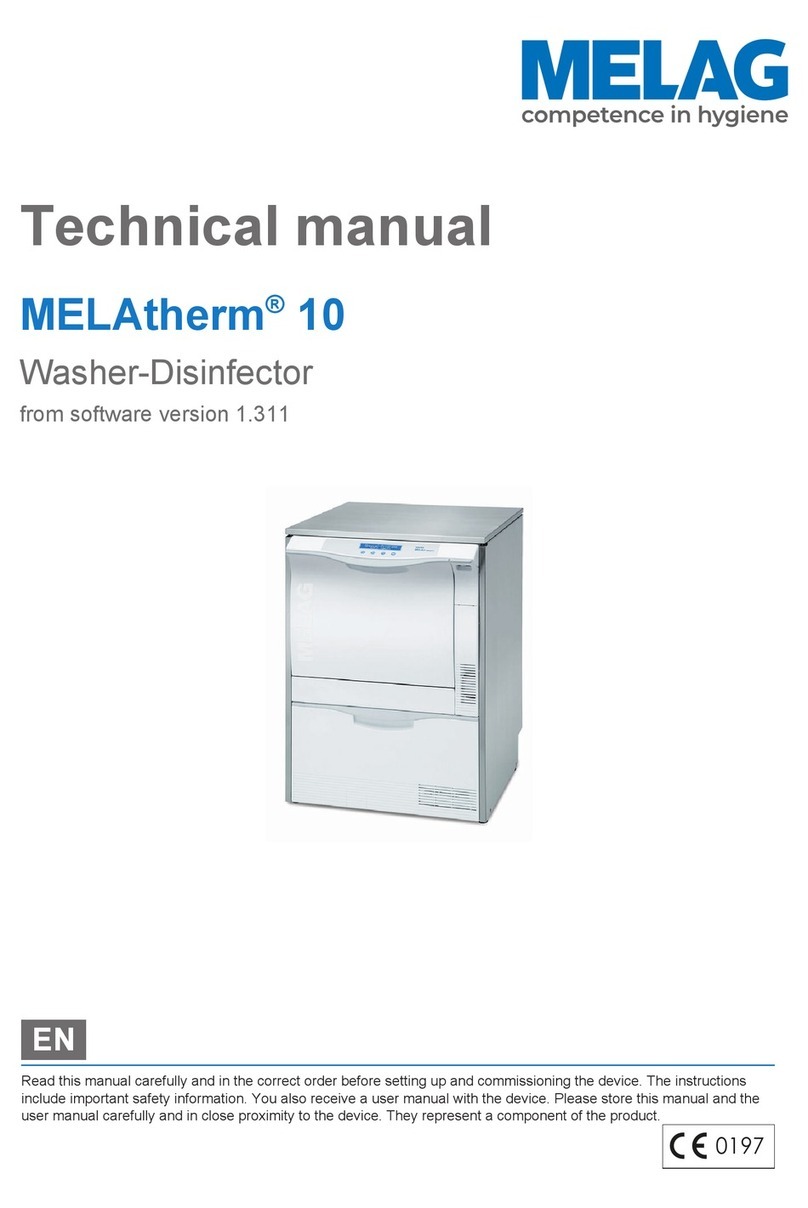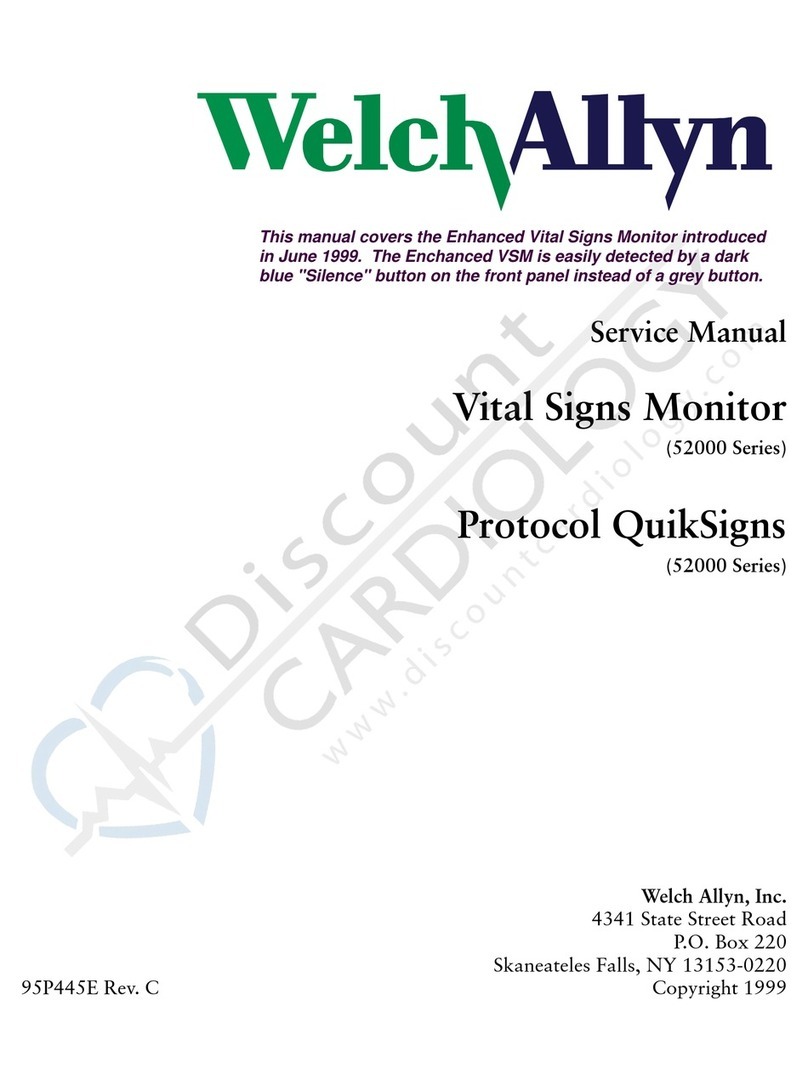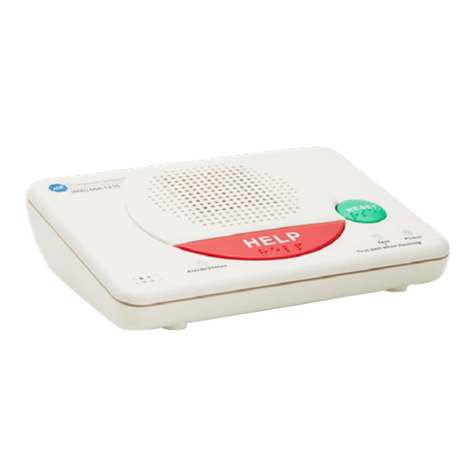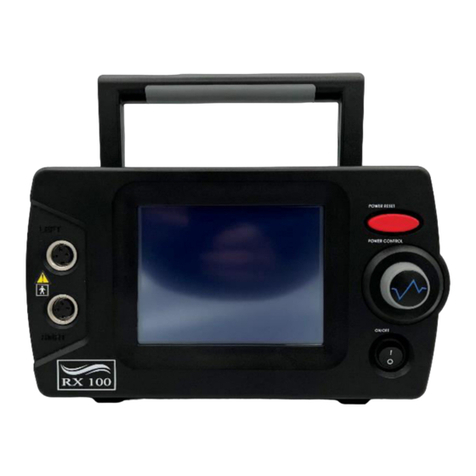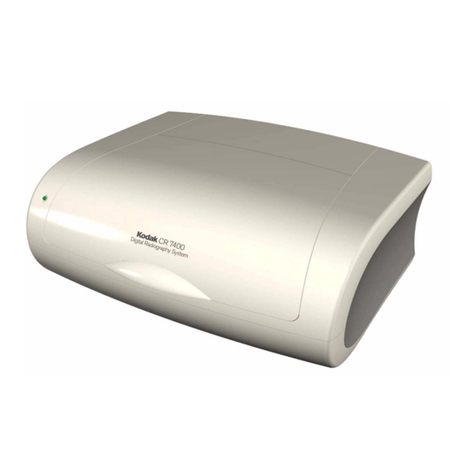GenScript eBlot User manual

GenScript USA Inc.
860 Centennial Ave.
Piscataway, NJ 08854
Tel: 732-885-9188, 732-885-9688
Fax: 732-210-0262, 732-885-5878
Email: [email protected]
Version No. 08152014
For fast semi-dry electroblotting of proteins from mini polyacrylamide
gels to nitrocellulose or PVDF membranes

Table of Contents
Product Contents
Product Specifications
eBlotTM Protein Transfer Device
Accessory Products
Introduction
Quick Reference Guide
Protocols
Troubleshooting
Examples of Results
Technical Support
Warranty
Appendix
1
3
5
7
8
11
12
21
22
23
24
25
eBlotTM Protein Transfer System www.genscript.com

Product Contents Product Contents, continued
Type of products
eBlotTM Protein Transfer
Device Contents
Upon Receiving
the Instrument
eBlotTM Protein Transfer
Pads
Component
eBlotTM Protein Transfer Device
eBlotTM Graphite Electrode (Installed inside the device)
Sponge Cushion (Installed inside the device)
Regional specific power cord
Forceps
Shovel
Shallow Tray
Quantity
1 each
1 each
2 each
1 each
1 each
1 each
2 each
Product
eBlotTM Protein Transfer Pads
(Basic, without membrane, 20-pak)
eBlotTM Protein Transfer Pads (Nitrocellulose, 20-pak)
eBlotTM Protein Transfer Pads (PVDF, 20-pak)
Cat. No.
L03011
L03013
L03014
This manual is supplied with the eBlotTM Protein Transfer Device (L03010). Components for eBlotTM Protein Transfer Pad are as follows:
The contents of the eBlotTM Protein Transfer Device are listed below
Examine the unit carefully for any damage incurred during transit. File any
damage claims with the carrier. The warranty does not cover in-transit
damage.
The following eBlotTM Protein Transfer Pads are available from GenScript:
Component
eBlotTM Protein Transfer Pad
Nitrocellulose membranes (20 sheets)
PVDF membranes (20 sheets)
eBlotTM Equilibration Buffer (125 ml)
Gel Window (66 mm×56 mm)
Gel Window (76 mm×64 mm)
Gel Window (88 mm×78 mm)
Absorbent Filter Paper
Sponge Cushion
Basic
20
-
-
2
1
1
1
1
2
PVDF
20
-
1
2
1
1
1
1
2
Nitrocellulose
20
1
-
2
1
1
1
1
2
The eBlotTM Protein Transfer Pads come with the following components.
eBlotTM Graphite Electrode
eBlotTM Equilibration Buffer
The eBlotTM Graphite Electrode (L03012) is available separately from GenScript:
For best results, when a graphite electrode has been used for 100 times of
protein transfer, replace it with a new one.
The eBlotTM Equilibration Buffer (M01078, 125 ml) is available separately from
GenScript.
Store the eBlotTM Protein Transfer Pads at room temperature. For best results,
use the eBlotTM Protein Transfer Pads before the expiration date printed on the
package.
Component
1× eBlotTM Cathode Pad
1× eBlotTM Anode Pad
eBlotTM Protein Transfer System www.genscript.com eBlotTM Protein Transfer System www.genscript.com
Quantity
1
1
- 2 --1 -
DO NOT start a run without properly assembled Transfer Stacks in place!
! Important
Product
eBlotTM Graphite Electrode
Cat. No.
L03012
Product
eBlotTM Equilibration Buffer
Cat. No.
M01078

- 4 -
Product Specifications Product Specifications, continued
eBlotTM Protein Transfer
Device Specifications
- 3 -
Weight:
Dimensions:
Electrical Parameters:
Built-in Features:
Compatibility:
Materials:
Operating Temperature:
Forceps:
Shovel:
Shallow Tray:
1.6 kg
325 mm (l) ×195 mm (w) ×70 mm (h)
100-120 V, 220-240 V, 50/60 Hz, 3.2 A
Digital Display, Alarm, Light LED
Suitable for fast electroblotting of proteins from mini
polyacrylamide gels to PVDF or nitrocellulose membranes
Acrylonitrile Butadiene Styrene, Polycarbonate,
Aluminum, Titanium, Plasticized silicone.
15 - 40 °C
Stainless steel
Polycarbonate
Polycarbonate eBlotTM Graphite Electrode
Specifications
Dimensions:
Weight:
Materials:
105 mm (l) × 95 mm (w) × 10 mm (h)
140 g
Powdered carbon, Clay, and Stainless steel
eBlotTM Graphite Electrode
The eBlotTM Electrode is used as the replaceable anode electrode
of eBlotTM Protein Transfer Device and available separately from GenScript.
The specifications for eBlotTM Graphite Electrode are listed below:
eBlotTM Protein Transfer
Pads Specifications
eBlotTM Anode Pad:
eBlotTM Cathode Pad:
Materials:
90 mm (l) × 80 mm (w) × 2.5 mm (thickness)
90 mm (l) × 80 mm (w) × 2.5 mm (thickness)
Blotting filter paper presoaked with proprietary
anode or cathode buffer
Nitrocellulose:
PVDF:
90 mm (l) × 80 mm (w)
90 mm (l) × 80 mm (w)
The eBlotTM Protein Transfer Pads are used with the eBlotTM Protein Transfer Device.
The specifications of the eBlotTM Protein Transfer Pads are listed below:
eBlotTM Protein Transfer Pad
Intended Use For research use only. Not intended for human or animal diagnostic or therapeutic uses.
Avoid acetone, dimethyl sulfoxide, and acetic acid. These reagents can erode
or damage the device.
Membrane
Size:
Formulation:
125 ml × 2
Proprietary
eBlotTM Equilibration Buffer
Inter frame size:
Materials:
66 mm × 56 mm
76 mm × 64 mm
88 mm × 78 mm
Polycarbonate
Gel Window
Size:
Materials:
80 mm × 70 mm
Vegetable fiber
Absorbent Filter Paper
eBlotTM Protein Transfer System www.genscript.com eBlotTM Protein Transfer System www.genscript.com

- 6 -
eBlotTM Protein Transfer Device eBlotTM Protein Transfer Device, continued
Front View of
eBlotTM Device
Rear View of
eBlotTM Device
- 5 -
Control Panel of
eBlotTM Device
Top View of
Open eBlotTM Device
The control panel of the eBlotTM Protein Transfer Device is described below.
The Digital Display shows two rows of multi-digits that specify the transfer
conditions as follows:
The upper three digits after text <PN> indicate how many times of transfer the
graphite electrode has been used for.
The lower four digits specify the running time of protein transfer in minute and
second.
The two Status Lights show the working mode of the eBlotTM Protein
Transfer Device. When the right status light is on, the device is switched on
and working at transferring mode; when both left and right status lights are on,
the device is working at numbering mode.
The Reset button is used to clear parameters.
The Min. button is used to shift between
transferring and numbering mode, and to
set running time. Each short press will
increase one minute. Each long press
(2 seconds) will toggle working mode from
transferring to numbering or the opposite.
The Sec. button is also used to set running
time, each press will increase 5 seconds.
The Start/Stop button is used to activate/stop
the transfer program.
The top view of open eBlotTM Protein Transfer Device identifying various parts.
The rear view showing various parts of the eBlotTM Protein Transfer Device
is shown below.
The front-top view showing various parts of the eBlotTM Protein Transfer Device
is shown below.
eBlotTM Protein Transfer System www.genscript.com eBlotTM Protein Transfer System www.genscript.com
Power SwitchAC Inlet
Titanium Cathode
Graphite Anode
Control Panel
Open Button

- 8 -
Accessory Products Introduction
eBlotTM Protein Transfer System www.genscript.com
Precast Gels and Premade
Buffers
ONE-HOUR WesternTM
Detection Kits
- 7 -
eBlotTM Protein Transfer System www.genscript.com
System Overview
System Components
Semi-dry Western blotting is a common technique applied in protein research.
Conventional semi-dry blotting is a cumbersome process, requiring time
-consuming reagent preparation and setup, followed by an electrophoretic
transfer that could take one hour or more. GenScript’s eBlotTM Protein Transfer
System accelerates the semi-dry blotting process without sacrificing performance.
The eBlotTM Protein Transfer System, consisting of the eBlotTM Protein Transfer
Device and eBlotTM Protein Transfer Pads, enables researchers to quickly,
reliably perform electrophoretic transfer of proteins from various types of mini
polyacrylamide gels to membranes in 7 to 10 minutes without the need to
prepare additional buffers.The proteins transferred using the eBlotTM Protein
Transfer System exhibit high detection sensitivity as to proteins transferred
using other existing blotting methods.
The eBlotTM Protein Transfer System consists of:
eBlotTM Protein Transfer Device
The eBlotTM Protein Transfer Device is a self-contained electroblotting unit
with a power supply built-in that allows for fast transfer of proteins.
eBlotTM Protein Transfer Pads
As the consumable part of eBlotTM Protein Transfer System, the eBlotTM
Protein Transfer Pads are the mixed assortment of eBlotTM Protein Transfer
Pad, nitrocellulose or PVDF membranes, Equilibration Buffer and Gel
Window. Each pack of eBlotTM Protein Transfer Pad contains an 1×eBlotTM
Cathode Pad and an 1×eBlotTM Anode Pad presoaked with proprietary
cathode buffer and anode buffer respectively, allowing for rapid, convenient
and reliable protein blotting without the need to prepare additional buffers.
The ONE-HOUR WesternTM Detection Kits used for Western blotting analysis
are available from GenScript. Ordering information is provided below. For
more information, visit www.genscript.com or call Technical Support.
The precast ExpressTM PAGE Gels as well as premade buffers and buffer
powders are available from GenScript. For details, contact Technical
Support or visit www.genscript.com.
Product
ONE-HOUR Western
TM
Basic Kit (Rabbit)
ONE-HOUR Western
TM
Basic Kit (Mouse)
ONE-HOUR Western
TM
Basic Kit (Goat)
ONE-HOUR Western
TM
Standard Kit (Rabbit)
ONE-HOUR Western
TM
Standard Kit (Mouse)
ONE-HOUR Western
TM
Standard Kit (Goat)
ONE-HOUR Western
TM
Standard Kit with TMB (Rabbit)
ONE-HOUR Western
TM
Standard Kit with TMB (Mouse)
ONE-HOUR Western
TM
Standard Kit with TMB (Goat)
ONE-HOUR Western
TM
Advanced Kit (Rabbit)
ONE-HOUR Western
TM
AdvancedKit (Mouse)
ONE-HOUR Western
TM
Advanced Kit (Goat)
ONE-HOUR IP-Western Kit (Rabbit)
ONE-HOUR IP-Western Kit (Mouse)
ONE-HOUR IP-Western Kit (Goat)
ONE-HOUR Western
TM
Fluorescent Kit
ONE-HOUR Western
TM
Multiplex Fluorescent Kit
Cat. No.
L00204
L00205
L00399
L00204C
L00205C
L00228
L00204T
L00205T
L00228T
L00241
L00242
L00243
L00231
L00232
L00233
L00397
L00398
Quantity
1 Kit (5 Assays)
1 Kit (5 Assays)
1 Kit (5 Assays)
1 Kit (5 Assays)
1 Kit (5 Assays)
1 Kit (5 Assays)
1 Kit (5 Assays)
1 Kit (5 Assays)
1 Kit (5 Assays)
1 Kit (5 Assays)
1 Kit (5 Assays)
1 Kit (5 Assays)
1 Kit (5 Assays)
1 Kit (5 Assays)
1 kit (5 Assays)
1 Kit (10 Assays)
1 Kit (10 Assays)

- 10 -
Introduction, continued Introduction, continued
eBlotTM Protein Transfer System www.genscript.com
System Features
- 9 -
eBlotTM Protein Transfer System www.genscript.com
Important features of the eBlotTM Protein Transfer System are listed below:
· Unique semi-dry electroblotting technique created for fast, reliable protein
transfer within 7-10 minutes.
· Self-contained electroblotting unit with an integrated power supply for easy
and convenient procedures.
· Consumable transfer pads offering convenience without the need for
additional buffers.
· Compatible for use with various types of mini polyacrylamide gels.
· Proprietary formula without methanol .
· High transfer efficiency as compared to other existing blotting methods.
System Mechanism The eBlotTM Protein Transfer System is based on the proprietary fast semi-dry
blotting technique developed by GenScript.
To use the eBlotTM Protein Transfer System for rapid protein blotting, assemble
the eBlotTM Protein Transfer Pad with your pre-run gel and the membrane on
the eBlotTM Protein Transfer Device. The eBlotTM Cathode Pad and eBlotTM
Anode Pad act as ion reservoirs that contain the appropriate anode and
cathode buffers. The design of the eBlotTM Protein Transfer Device reduces
the distance between electrodes and the integrated power supply enables the
system to generate a certain definite voltage allowing for rapid and directional
movement of negatively charged protein molecules from the gel matrix onto
the membrane within 7-10 minutes. Meanwhile, the membrane presoaked with
eBlotTM Equilibration Buffer shows good combination ability with proteins that
prevents the flow through of low molecular weight proteins from the membrane.
Schematic mechanism of eBlotTM Protein Transfer System showing the flow
of current:
TM
TM
Window

- 12 -
Protocols
eBlotTM Protein Transfer System www.genscript.com
- 11 -
eBlotTM Protein Transfer System www.genscript.com
Recommendations
1. Check the Power Cord supplied with the unit to ensure that the cord is
compatible with the local socket format.
2. Place the eBlotTM Protein Transfer Device on a levelled laboratory bench.
Keep the area around the device clear to ensure proper ventilation of the
unit.
3. For your safety: Position the device properly such that the Power Switch
and the AC inlet located on the rear of the unit are easily accessible.
4. Ensure the Power Switch is in the Off position.
5. Open the closed lid of the eBlotTM Protein Transfer Device by pressing
the Open button. Place one or two pieces of Sponge Cushion in the anode
tank depending on gel thickness. For 0.75 and 1.0mm gel, use one or two
pieces of Spong Cushion; for 1.5mm gel, use one or zero piece of Sponge
Cushion.
Note: After 20 times of protein transfer, replace the used Sponge Cushions with new
ones. A pair of new Sponge Cushions are included in each box of eBlotTM Protein
Transfer Pads.
6. Insert the eBlotTM Graphite Electrode into the anode tank as described in
Section "Replacing the eBlotTM Graphite Electrode", then close the lid of
the device.
Installing the
eBlotTM Device
Quick Reference Guide
Mode
eBlotTM Device
plugged in
eBlotTM Device and
transfer stack
assembled
Time selection
Run
End of run
Checking the number
of uses of the
graphite anode
Replacement of
worn graphite
anode
Action
Connect eBlotTM
Device to an electrical
outlet and power
switch is on
Assemble transfer
stack on the device
and close lid
Press Min. and Sec.
button to select
desired running time
Press Start/Stop
button
Automatic
Press and hold Min.
button for 2 seconds
Switch off the device
and replace the worn
graphite anode with a
new one
Sound
–
–
–
–
Continuous beeping
for 2 minutes
–
–
Light
Steady right
light
Steady right
light
Steady right
light
Flashing right
light
Steady right
light
Steady left
and right lights
–
Display
Default
running
time (00:00)
Default
running
time (00:00)
User specified
running
time (00:00)
Counting down
time
Default running
time (00:00)
Times of the
graphite anode
has been used
for transfer
–
A quick reference guide for operating the eBlotTM Protein Transfer
Device is provided below.
Introduction To obtain the best results, follow these recommendations:
1. Wear gloves at all times during the entire blotting procedures to prevent
contamination of pads, gels and membranes.
2. Do not touch the gel or membrane with bare or gloved hands.
This may contaminate the gel or membrane and interfere with further
analysis. If needed, always use forceps to adjust the membrane or gel.
3. Avoid using expired eBlotTM Protein Transfer Pads and eBlotTM Equilibration
Buffer. Always use the pads and buffer before the specified expiration date
printed on the package.
4. Remove any trapped air bubbles between the gel and membrane during
the assembly of the transfer stack using the small shovel supplied with the
device.

- 14 -
eBlotTM Protein Transfer System www.genscript.com
Assembling the Transfer
Stack, continued
- 13 -
eBlotTM Protein Transfer System www.genscript.com
4. Pour 10 ml eBlotTM Equilibration Buffer into the shallow tray supplied
with the eBlotTM Device.
5. Tear the sealing of the Nitrocellulose or PVDF Membranes package.
Remove one sheet of membrane and soak it in the eBlotTM Equilibration
Buffer for 1 minute.
Note: If a PVDF membrane is used, the membrane must be pre-wetted with methanol
before equilibrating in eBlotTM Equilibration Buffer. For users of eBlotTM Protein
Transfer Pads (Basic, 20-pak) (L03011), the precut membrane should be
prepared by themselves.
3. Tear the sealing of the 1×eBlotTM Anode Pad package. Remove the
eBlotTM Anode Pad from the package and place it on the anode plate of
the eBlotTM Protein Transfer Device.
Note: The pad must be placed in the middle of the graphite electrode position, can not
contact on both sides of the metal frame.
Protocols, continued Protocols, continued
8. Attach the power cord to the AC inlet and then to the electrical outlet.
Use only properly grounded AC outlets and power cords.
9. When the electrophoresis of your samples is almost complete, press
the Power Switch (located on the rear of the device) to turn ON the
eBlotTM Protein Transfer Device. The right Status Light is on indicating
you are using transfer mode. The lower four digits of the Digital Display
show the default running time (00:00).
You are ready to use the eBlotTM Protein Transfer Device for blotting application.
Assembling the Transfer
Stack
1. Open the closed lid by pressing the Open button.
2. Remove one package labeled as eBlotTM Protein Transfer Pad from the
eBlot™ Protein Transfer Pads box and tear the laminated sealing of the
package. Remove the two small packages respectively labeled 1×eBlotTM
Cathode Pad and 1×eBlotTM Anode Pad.
7. Pull out the Waste Tray from the right side of the device. Place a new
Absorbent Filter Paper inside the tray and then push the tray in.
Note: Change absorbent paper with a new one when opening a new box of pads.
Installing the
eBlotTM Device , continued

- 16 -
Protocols, continued Protocols, continued
eBlotTM Protein Transfer System www.genscript.com
Assembling the Transfer
Stack, continued Assembling the Transfer
Stack, continued
- 15 -
eBlotTM Protein Transfer System www.genscript.com
8. Place the gel on the membrane. Gently remove air bubbles between the
gel and the membrane.
9. Select appropriate Gel Window according to actual size of the gel (see
the table below). Place Gel Window on the gel. Ensure that the Gel
Window fully covers the margin of the membrane.
10. Tear the sealing of the 1×eBlotTM Cathode Pad package. Remove the
eBlotTM Cathode Pad from the package and place it on the gel.
Note: Gel Window is used as the spacer between anode pad and cathode pad to
prevent short circuit.
Note: During assembling of the transfer stack, make sure to remove all the air bubbles
trapped between the transfer pads, pre-run gel and the membrane, which may
prevent the transfer of proteins and cause empty spots on the transferred membrane.
6. Place the equilibrated membrane on the eBlotTM Anode Pad. Gently remove
air bubbles between the membrane and the anode pad using the small
shovel supplied with the device.
7. Carefully remove the pre-run gel containing your protein samples from the
gel cassette and briefly rinse the gel with distilled water in another shallow
tray to remove any small gel pieces attached to the gel and facilitate easy
positioning of the gel on the membrane.
Pre-run gel
Gel with size > 80 × 60 mm
Gel with size 66 × 56 mm to 80 × 60 mm
Gel with size < 66 × 56 mm
Gel Window
Gel Window 88 × 78 mm
Gel Window 76 × 64 mm
Gel Window 66 × 56 mm

- 18 -
eBlotTM Protein Transfer System www.genscript.com
- 17 -
eBlotTM Protein Transfer System www.genscript.com
3. At the end of the transfer, current automatically shuts off and the eBlotTM
Protein Transfer Device signals the end of transfer with repeated beeping
sound. The right status light stops flashing and the lower five digits show
text (00:00).
4. Press any button on the control panel to stop the beeping.
5. Proceed to disassemble the stack and clean the device.
To obtain good transfer and detection results, disassemble the transfer stack
right away after ending the blotting procedure.
1. Open the closed lid by pressing the Open button.
2. Carefully separate the transferred membrane from the transfer stack and
proceed with further protein detection procedures.
Note: If you are using PVDF membrane, place the membrane immediately into the
blocking solution (or water) as PVDF membrane dries quickly. If the PVDF
membrane is dried, rewet the membrane with methanol and then rinse it with
distilled water to wet it completely before use.
3. Discard the gel and the used eBlotTM Protein Transfer Pad.
Note: Do not re-use the eBlotTM Protein Transfer Pad after blotting. Discard after each
use.
4. Clean the titanium cathode plate, graphite anode plate and its surrounding
area with a dry cloth or paper tissue.
5. Replace the Absorbent Filter Paper in the Waste Tray with a new one when
it has soaked up the waste from 20 times of transfer. Pull out the Waste
Tray from the right side of the device to perform the replacement.
Note: After about 40 runs, take out the graphite electrode, soak in distilled water for 30
minutes, dry the surface with a clean paper towel, then leave air dry overnight with
graphite side up.
At this point, the eBlotTM Protein Transfer Device is ready for another run.
If you are not using the device, turn off the Power Switch located on the back
of the device.
For any other repairs and service, contact Technical Support. Do not perform
any repairs or service on the eBlotTM Protein Transfer Device by yourself to
avoid any possible damages to the device.
Disassembling and
Cleaning the
eBlotTM Device
Protocols, continued
Performing Blotting,
continued
Protocols, continued
Performing Blotting
2. Press the Start/Stop button to start the transfer. The running time begins to
count down and right Status Light keeps flashing during the whole transfer
program.
Perform protein blotting as described below within 15 minutes of assembling
the transfer stack.
1. Press the Min. and Sec. buttons to set appropriate running time based on
the protein size (see table below). If an undesired running time is set by
mistake, press Reset button to clear the wrong time, and then press the
Min. and Sec. buttons to choose the desired running time.
Note: Based on the initial results, the transfer time may need to be optimized to make best
transfer results by pressing the Time button in 5-second increment. For proteins greater
than 200 kDa, we recommend to start with 11 minutes.
Protein size (kDa)
< 80
80-160
> 160
Recommended
start running time (min)
7
8-9
10
11. Press the Open button, and then push back and close the lid of eBlotTM
Protein Transfer Device.
Assembling the Transfer
Stack, continued

- 20 -
eBlotTM Protein Transfer System www.genscript.com
- 19 -
eBlotTM Protein Transfer System www.genscript.com
4. Switch On the eBlotTM Device. Press and hold Min. button for 2 seconds
to toggle to numbering mode. When the upper three digits are flashing,
press Reset button to zero the transferring times.
Protocols, continued
Replacing the Graphite
Electrode, continued
After successfully installing Graphite Electrode into the eBlotTM Device, you are
ready to use the eBlotTM Device for another blotting application.
2. Switch Off the eBlotTM Protein Transfer Device. Open the lid of the device
and take the worn Graphite Electrode out of the device.
3. Tear the sealing of a new Graphite Electrode package and take the new
Graphite Electrode out of the package. Place the new Graphite Electrode
into the anode tank and close the lid of the device.
1. If the eBlotTM Protein Transfer Device works at transferring mode, press and
hold Min. button for 2 seconds to toggle to numbering mode. If the upper
three digits show “100” or a number greater than “100”, perform the replacing
protocol as describe below.
Protocols, continued
During the transfer process, the Graphite Electrode will absorb ions from anode
pad as well as lose carbon composition of the anode buffer. For best blotting
results, after having been used for 100 times of transfer, the worn Graphite
Electrode should be replaced by a new one.
Replacing the Graphite
Electrode

Good transfer of protein standard bands onto the nitrocellulose membrane.
Protein Standards were separated on a 4-20% GenScript ExpressTM Plus
PAGE Gel (Bis-Tris). After electrophoresis, the gel was blotted using the
eBlotTM protein transfer system for 11 min as described in this manual.
Lane 1 and 2, Invitrogen Pre-Stain protein marker (5 L, MW: 4-250 kDa),
Lane 3 and 4, Bio-rad Pre-Stain protein marker (10 L, MW: 10-250 kDa),
and Lane 5-9, NEB All Blue Pre-Stain protein marker (0.3, 0.6, 1.3, 2.5, and
5 L, MW: 10-230 kDa).
- 22 -
eBlotTM Protein Transfer System www.genscript.com
- 21 -
eBlotTM Protein Transfer System www.genscript.com
Examples of ResultsTroubleshooting
Problem
The right Status Light doesn’t
flash during blotting process.
The left and right Status
Lights flash simultaneously.
Inefficient transfer
Empty spots on the membrane
Cause
Incomplete electric circuit due
to improper assembly of the
transfer pads.
Excessive current is flowing
through the Device.
1. Salt built-up on plate electrodes
2. Membrane insufficiently
equilibrated in eBlotTM Equilibration
buffer
3. Incorrect transfer conditions or
insufficient transfer time
4. PVDF membrane was not prewet
with methanol
5. Confusion of the eBlotTM Anode
Pad and Cathode Pad
Air bubbles trapped between gel
and membrane prevent the
transfer of proteins.
Solution
Ensure the transfer stack is
assembled correctly: use the
eBlotTM Anode Pad first followed
by the membrane, the pre-run gel,
Gel Window and eBlotTM Cathode
Pad.
Check the transfer stack and
ensure Gel Window covered
correctly on the gel.
1. Clean the titanium cathode
plate, graphite anode plate
with a wet cloth or paper
tissue followed by a dry one
to remove any insoluble
salts.
2. Equilibrate membrane in
eBlotTM Equilibration
buffer before transfer.
3. Use a gel of lower
concentration to separate
high molecular weight proteins.
Increase the transfer time in
5-second increments.
4. Pre-wet PVDF membrane
with methonal before
transfer.
5. Ensure the transfer stack is
assembled correctly:
Bottom-eBlotTM Anode Pad
(yellow), Top-eBlotTM Cathode
Pad (white).
When assembling transfer stack,
use the small shovel supplied with
the device to remove any air
bubbles between the gel and the
membrane.
An Express™ PAGE Gels 8-16% (GenScript MG816W12) was blotted using
the eBlotTM. 10.0, 5.0, 2.5, 1.25 0.62, 0.31 and 0.16 g of HeLa cell lysate
were loaded respectively. Proteins on the Nitrocellulose membrane were
detected using THETM alpha Tubulin Antibody (GenScript, A01410), THETM
beta Actin Antibody (GenScript, A00702) and GAPDH Antibody (GenScript,
A01632). The secondary antibody was Anti-MOUSE IgG (H & L) (GOAT)
Antibody Peroxidase Conjugated (Rockland, 610-1302). The signal was
developed with LumiSensorTM HRP Substrate Kit (GenScript, L00221V500)
Westen blot result after
using the eBlotTM for
protein transfer
Result Using Nitrocellulose 12 3456789
kDa)
kDa)
kDa)

- 24 -
eBlotTM Protein Transfer System www.genscript.com
- 23 -
eBlotTM Protein Transfer System www.genscript.com
eBlotTM Protein Transfer
Device GenScript warrants that eBlotTM Protein Transfer Device will be free from
defects in material and workmanship for a period of one year from date of
purchase. If any defects occur in the product during this warranty period,
GenScript will, at its option, repair, replace, or refund the purchase price of
this product at no charge to you. The following defects, however, are
specifically excluded:
1. Defects caused by improper operation.
2. Repair or modification done by anyone other than GenScript or an
authorized agent.
3. Use of fittings or other spare parts supplied by anyone other than
GenScript.
4. Damage caused by accident or misuse.
5. Damage caused by disaster.
6. Corrosion due to use of improper solvent or sample.
For any inquiry or request for repair service, contact GenScript after
confirming the model and serial number of your instrument. For your
protection, items being returned must be insured against possible damage or
loss. This warranty shall be limited to the replacement of defective products.
It is expressly agreed that this warranty will be in lieu of all warranties of
fitness and in lieu of the warranty of merchantability.
WarrantyTechnical Support
Visit the GenScript Web site at www.genscript.com for:
1. Technical resources, including manuals, vector maps and sequences,
application notes, MSDSs, FAQs, formulations, citations, handbooks, etc.
2. Complete technical support contact information
3. Access to the GenScript Online Catalog
4. Additional product information and special offers
For more information or technical assistance, call, write, fax, or email.
GenScript USA Inc.
860 Centennial Ave.
Piscataway, NJ 08854
Tel: 732-885-9188, 732-885-9688
Fax: 732-210-0262, 732-885-5878
Email: [email protected]
Web Resources
Contact Us

- 26 -- 25 -
Appendix Appendix, continued
eBlotTM Protein Transfer System www.genscript.com eBlotTM Protein Transfer System www.genscript.com

- 27 -
Appendix, continued
eBlotTM Protein Transfer System www.genscript.com
Table of contents
